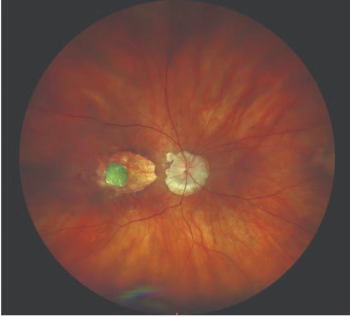
Zika virus linked with fundus lesions in newborns in French territories
This research team conducted a cross-sectional multicenter study to report the ocular fundus manifestations in infants with congenital ZIKV exposure in French Guiana, Martinique, and Guadeloupe, French West Indies.
French researchers reported that the Zika virus may be responsible for ocular anomalies found in children of mothers who had a confirmed Zika virus infection in French Guiana, Guadeloupe, and Martinique, French West Indies,1 according to Harold Herle, MD, PhD, lead study author from the Department of Ophthalmology, University Hospital of Martinique, Hôpital Pierre Zobda Quitman, Fort-de-France, Martinique, French West Indies, France.
This research team conducted a cross-sectional multicenter study to report the ocular fundus manifestations in infants with congenital ZIKV exposure in French Guiana, Martinique, and Guadeloupe, French West Indies, to assess its prevalence. They sought to determine risk factors, specifically the presence of extraocular diseases present in the fetuses and the gestational term at the time of infection.
The prospective study ran from August 1, 2016, when the ZIKV epidemic started in the French West Indies, to April 30, 2019, and included newborns whose mothers tested positivefor ZIKV during pregnancy.
The main outcomes were the presence of vitreous, choroidal, retinal, and optic disc anomalies seen during fundus examinations using widefield retinal imaging after pupil dilation. The infection date, delivery mode, and newborn measurements were collected.
Findings in newborns
The study included 330 children (mean age, 68 days) were included.
The investigators reported that 11 children (3.3%) had perivascular retinal hemorrhages, and 3 (0.9%) had lesions compatible with congenital ZIKV infection, i.e., 1 child each had torpedo maculopathy, a chorioretinal scar with iris and lens coloboma, and a chorioretinal scar.
Early screening of child at birth showed retinal hemorrhages. Lesions compatible with congenital ZIKV infection were not associated with the presence of extraocular fetal pathologies. Microcephaly was not associated with lesions compatible with congenital ZIKV infection (odds ratio [OR], 9.1; 95% confidence interval [CI], 0.8-105.3; P = 0.08), but severe microcephaly was associated with an OR of 81 (95% CI, 5.1-1297.8; P = 0.002).
The authors commented, “The results of this cross-sectional study suggested that the ocular anomalies found may be associated with ZIKV in 0.9% of the exposed population. Ocular lesions were rare and affected mostly the choroid and retina and seemed to be associated with choroiditis-related scarring that developed during fetal growth.”
Reference
1. Herle H, Chassery M, Béral L, et al. Fundus changes in the offspring of mothers with confirmed Zika virus infection during pregnancy in French Guiana, Guadeloupe, and Martinique, French West Indies. JAMA Ophthalmol. Published online September 1, 2022. doi:10.1001/jamaophthalmol.2022.3405
Newsletter
Keep your retina practice on the forefront—subscribe for expert analysis and emerging trends in retinal disease management.












































